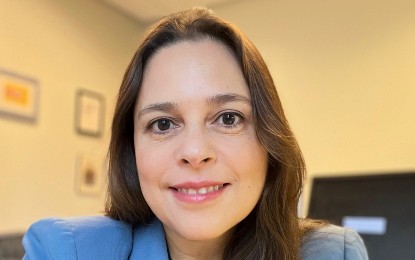It’s not often that pain leads to a sense of purpose or accomplishment.
But that’s what drives Marcela Romero-Reyes, DDS, PhD, FAAOP, FAHS, clinical professor and director of the Brotman Facial Pain Clinic in the Department of Neural and Pain Sciences at the University of Maryland School of Dentistry (UMSOD). As a clinician/scientist, she is passionate about treating patients who suffer from orofacial pain disorders -- and seeking novel ways to alleviate their suffering.

Marcela Romero-Reyes, DDS, PhD, FAAOP, FAHS
According to the National Pain Advocacy Center, more than 40 million Americans suffer from severe pain, one in six experience daily pain, and chronic pain is the No. 1 cause of disability. Included are oral pain disorders that can make routine activities such as chewing, brushing teeth, or smiling excruciatingly painful.
“Being able to deliver a diagnosis and management plan and help patients control their pain and have a positive impact on their quality of life is the most wonderful, joyful feeling,” Romero-Reyes said. “However, there is still much to do: Our current therapeutic options are still not optimal.”
Her focus is on treatment advances for those who suffer from orofacial pain, which affects an estimated 25-35% of the U.S. population, according to the American Academy of Orofacial Pain.
In recognition of her contributions to the field of orofacial pain and headache research, Romero-Reyes was named a 2022 recipient of the Steven B. Graff-Radford Orofacial Pain and Headache Lectureship by the American Headache Society (AHS). As the recipient of the honor, named for the late Dr. Steven B. Graff-Radford, the first dentist to serve as an AHS board member, Romero-Reyes presented a lecture last fall at the Scottsdale Headache Symposium, an annual event hosted by AHS for doctors, dentists, physical therapists, psychologists, and other health care professionals who treat headache pain.
“I am honored to be recognized with this award; Dr. Steven Graff-Radford was a very dear mentor to me while I was at UCLA,” said Romero-Reyes, who in 1999 graduated in 1999 from the School of Dentistry at the National University of Mexico, and in 2006 earned a PhD in Oral Biology and an Orofacial Pain and Dysfunction residency program certificate at the UCLA School of Dentistry. She then pursued postdoctoral training in neuroscience at the UCLA Headache Research and Treatment Program (Goldberg Migraine Program).
Noting that her investigations are aimed at improving the lives of many, Mark A. Reynolds, DDS, PhD, UMSOD dean and professor, said: “The School of Dentistry is proud of the work that Dr. Romero-Reyes is doing and the difference it can make in the world. I am pleased that she and her colleagues are pursuing valuable new patient treatments.”
It is not the first recognition Romero-Reyes has received. She is a Diplomate of the American Board of Orofacial Pain, Fellow of the American Academy of Orofacial Pain, and Fellow of the American Headache Society. In 2009, she was the inaugural recipient of the American Headache Society/ Migraine Research Foundation Thomas E. Heftler Migraine Research Award and a first-place recipient of the American Association of Dental Research Hatton award; in 2006, a recipient of the NYU Whitehead Fellowship in Biomedical and Biological Sciences.
Before joining UMSOD, Romero-Reyes was an assistant professor at NYU College of Dentistry in the Department of Oral and Maxillofacial Pathology, Radiology and Medicine and director of its orofacial and head pain clinical service and Advanced Program for International Dentists in Oral Medicine & Orofacial Pain.
Last fall, Romero-Reyes along with Simon Akerman, PhD, a research assistant professor in the Department of Neural and Pain Sciences, were named co-recipients of a $5.3 million grant awarded by the Department of Defense and the National Institutes of Health to study a new way to treat and prevent migraines by “switching off” specific pain receptors. The study utilizes existing drugs – already FDA approved – to potentially fast-track results for the 50 percent of migraine patients who get little relief from existing medications.
“That is a huge advantage because the development of the drug itself has already been done, but we are able to repurpose these molecules to dissect a completely novel mechanism and therapeutic approach in migraine,” Romero-Reyes said.
“Translational research takes a long time to finally get to the hands of patients -- this is necessary -- but we can speed the process by repurposing existing drugs that have been shown to be safe and looking at the mechanism and potential applications for pain management.”



